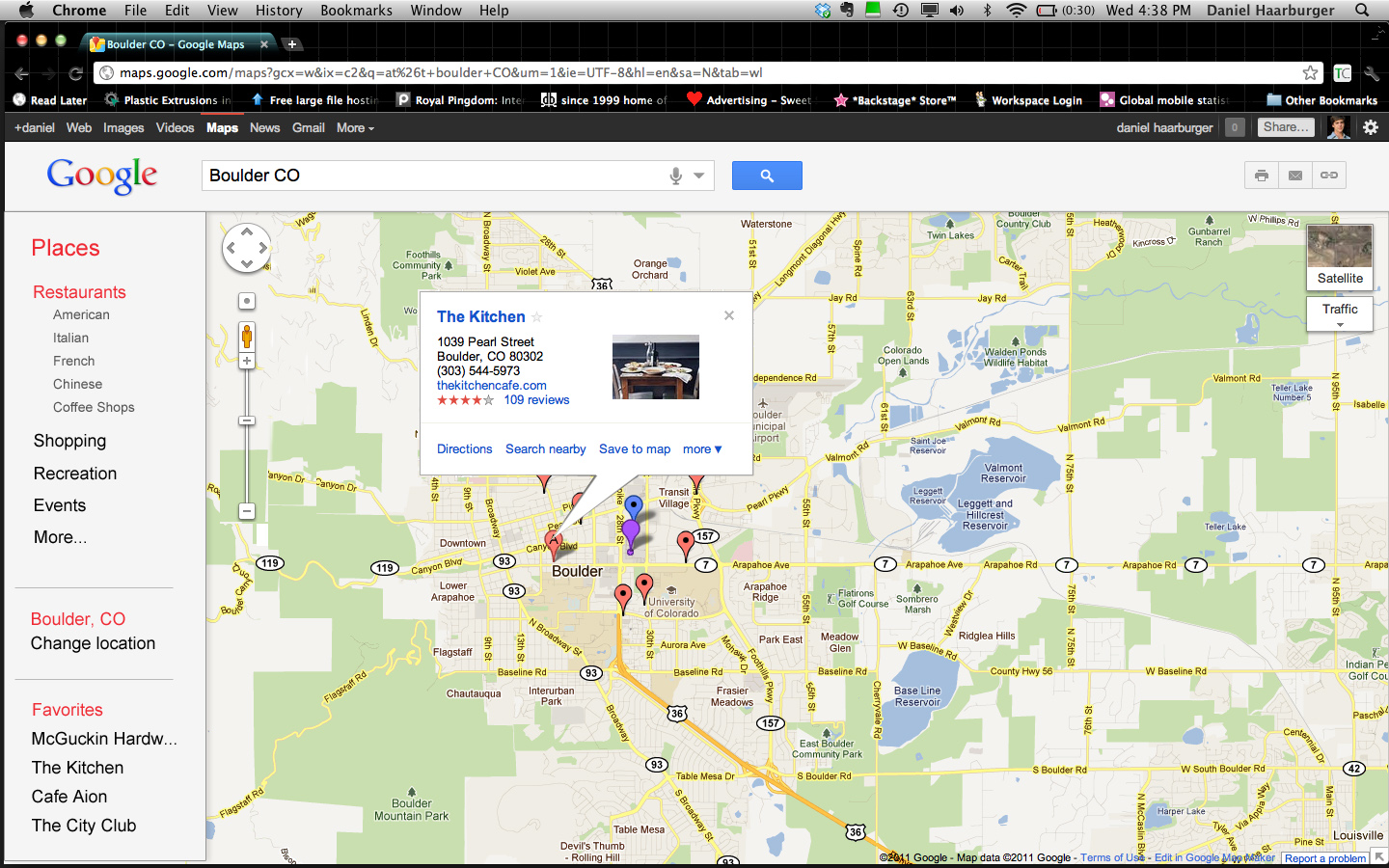Back in 2009 there was a large commotion in the tech community when Yelp turned down a $500M acquisition offer from Google. Trying to make deeper inroads into local advertising, Google saw Yelp's 27 million reviews and 8 million users as a valuable asset to its hometown crusade. The deal was turned down, but this did not quash Google's plans for localized search listings. Google turned to "Plan B" charged in to local reviews listings hoping to prove, "well we don't need you anyway."
And the truth of it is, Google doesn't need Yelp. At this year's South by Southwest conference, Marissa Mayer noted that over 6 million companies have already registered with Google Places. Just browsing the local listings, there seems to be no absence of reviews either. In Boulder, Colorado the average Chinese restaurant has 12 reviews. In Fort Collins, it has 20. Google has always built its service off numbers and statistics. The more reviews the better. But this is only half true.
Yes, I care about the amount of feedback regarding a specific listing, but at a certain point additional reviews become irrelevant. 200 reviews of a restaurant are more than I need. At 15 I have a pretty good idea of where I want to go and what I want to eat.
Much more important becomes how I interact with this spread of information. Google search is very specific when in reality most people go to Yelp not knowing exactly what they're looking for. They know the category, but that's about it.
G-Places should be a service for browsing not for searching. It should be a place where people can look at the big picture then narrow in at what most suits their appetite.
The best part is that Google already has the infrastructure and data in place to create this dynamic repository. It just requires a change in the way the information is listed. Instead of being a scrolling index of search results, Google places should be mapped out categorically so one can quickly flip between options. This system would provide individuals a broad spectrum of results which could be narrowed by type, location, or rating.
Furthermore, the ability to browse by category rather than entering search queries will become increasingly valuable as more individuals access more information from their mobile devices. Typing in restaurants on the iPhone is a pain, especially if it takes several searches to determine what you're in the mood for. Button clicking is easy.
By visually identifying the businesses in a given area, Google could open up huge new potential for localized advertising. Currently if you click on a specific business in Google Places a text box appears offering additional information. If this text box opens automatically displaying a few sponsored listings, it could be an effective means of driving traffic to the sponsored business. Plus, Google could make a pretty penny.
The last opportunity that this affords is the ability for Google Places to expand beyond brick and mortar businesses. If Google categorically organized its map results it could easily add a new layer: Events.
This opens a whole new realm of use. People would go to Google not just to find what they are looking for, they would go to Google to find something to look for. Google would become tool for plan making and that is something not even Yelp can boast.
